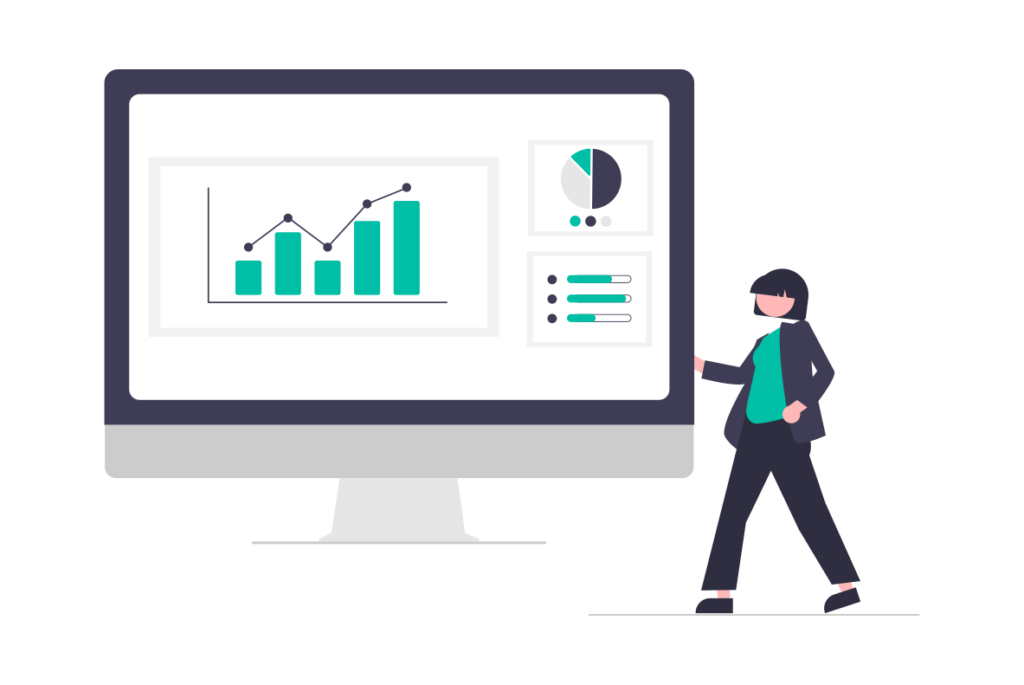How to Build an Effective Advertising Tech Stack

Having an effective advertising tech stack is crucial to the success of any business. With the right tools and components, you can maximise your advertising efforts and reach your target audience more efficiently.
Let’s explore the importance of an advertising tech stack and the key components needed to build, maintain and optimise your own stack for long-term success.
The importance of an advertising tech stack
So, what is exactly is an advertising tech stack? An advertising tech stack is a collection of software tools and platforms that work together to manage and optimise your advertising campaigns. It’s like a toolbox that helps you streamline your advertising efforts and make data-driven decisions.
But why is an advertising tech stack so important? Let’s explore further.
An advertising tech stack typically includes various components such as data management platforms (DMPs), demand-side platforms (DSPs), ad exchanges and networks, and more. These tools help you gather, analyse, and utilise data to create targeted and effective advertising campaigns.
Imagine you’re a business owner looking to promote your new product. Without an advertising tech stack, you would have to manually handle every aspect of your advertising campaign, from targeting the right audience to tracking the performance of your ads. This would not only be time-consuming but also prone to human error.
However, with an advertising tech stack in place, you can automate and streamline these processes. DMPs, for example, allow you to collect and organise data about your target audience, such as their demographics, interests, and online behaviour. This data can then be used by DSPs to bid on ad placements in real-time, ensuring that your ads are shown to the right people at the right time.
Furthermore, an advertising tech stack enables you to track the performance of your campaigns and make data-driven decisions. By analysing metrics such as click-through rates, conversion rates, and cost per acquisition, you can identify which ads are performing well and which ones need improvement. This allows you to optimise your campaigns on the fly, ensuring that your advertising budget is being spent effectively.
But the benefits of an advertising tech stack don’t stop there. It also helps you understand your customers’ behaviour and preferences on a deeper level. By analysing data from various sources, such as website analytics and customer relationship management (CRM) systems, you can gain insights into what motivates your customers to make a purchase. Armed with this knowledge, you can create more personalised and targeted ads that resonate with your audience, leading to higher conversion rates and increased ROI.
In conclusion, an advertising tech stack is a powerful tool that can revolutionise your advertising efforts. By automating processes, analysing data, and understanding your customers’ behaviour, it allows you to create targeted and effective campaigns that drive results. So, if you haven’t already, it’s time to consider implementing an advertising tech stack in your business.
Key components of an effective advertising tech stack
Now that we understand the importance of an advertising tech stack, let’s dive into the key components that make it up. Here are three essential components to consider:
Data management platforms
A data management platform (DMP) is a tool that allows you to collect, organise, and analyse customer data. It helps you segment your audience based on various attributes such as demographics, behaviours, and interests. With a DMP, you can create highly targeted campaigns to reach the right audience at the right time.
Imagine having access to a treasure trove of valuable information about your customers. A DMP acts as a digital library, where you can store and manage all the data you have gathered from various sources. It’s like having a team of expert librarians who meticulously organise every piece of information, making it easily accessible whenever you need it.
Not only does a DMP allow you to collect data, but it also empowers you to make sense of it. It’s like having a team of data scientists at your disposal, analysing the data to uncover valuable insights. These insights can then be used to create personalised marketing campaigns that resonate with your target audience.
Demand-side platforms
A demand-side platform (DSP) is a software that enables advertisers to buy and manage ad inventory across multiple ad exchanges and networks. It provides a centralised platform for bidding on ad placements, targeting specific audiences, and monitoring campaign performance. With a DSP, you can optimise your ad spend and maximise your return on investment.
Think of a DSP as your personal assistant in the world of digital advertising. It’s like having a dedicated team of professionals who handle all the nitty-gritty details of buying and managing ad inventory. They tirelessly scour the digital landscape, identifying the best opportunities for your ads to shine.
With a DSP, you have the power to precisely target your ads to the right audience. By leveraging advanced targeting capabilities, you can ensure that your ads are seen by the right people at the right time.
Ad exchanges and networks
Ad exchanges and networks connect advertisers with publishers who have ad space available on their websites. These platforms facilitate the buying and selling of ad inventory in real-time through automated auctions. By leveraging ad exchanges and networks, you can reach a wider audience and increase the visibility of your ads.
Imagine stepping into a bustling marketplace, filled with eager buyers and sellers. Ad exchanges and networks are like the digital version of such a marketplace, where advertisers and publishers come together to make deals. It’s a dynamic environment, where ad inventory is bought and sold in the blink of an eye.
By participating in ad exchanges and networks, you gain access to a vast network of publishers who are willing to showcase your ads on their websites. It’s like having an army of brand ambassadors, spreading the word about your products or services to a diverse range of audiences. The more ad exchanges and networks you tap into, the greater your reach becomes.
Building your own advertising tech stack
Now that you understand the key components of an effective advertising tech stack, let’s explore how to build your own stack tailored to your business needs. Here are the essential steps:
Identifying your business needs
The first step in building your advertising tech stack is to identify your business needs and goals. Consider what specific challenges you’re facing and what metrics you want to improve. This will help you determine which components and tools are necessary for your stack.
Selecting the right tools
Once you’ve identified your needs, it’s time to research and select the right tools for your advertising tech stack. Consider factors such as functionality, ease of use, integration capabilities, and cost. Don’t be afraid to test out different tools or seek recommendations from industry experts to find the right fit for your business.
Integrating your tech stack
After selecting the tools, the next step is to ensure smooth integration between the various components of your tech stack. This may involve configuring APIs, setting up data syncing, and establishing communication channels between the different tools. Integration is crucial for seamless data flow and efficient campaign management.
Maintaining and optimising your advertising tech stack
Building your advertising tech stack is just the beginning. To ensure its long-term effectiveness, you need to regularly review, maintain, and optimise it. Here are some key practices:
Regularly reviewing your tech stack performance
Set aside time to review the performance of your advertising tech stack on a regular basis. Analyse key metrics, such as conversion rates, return on ad spend, and customer acquisition costs. Identify areas that need improvement and make data-driven decisions to optimise your campaigns.
Keeping up with industry changes and updates
The advertising landscape is ever-evolving, with new technologies and trends emerging constantly. It’s important to stay up to date with industry changes and updates. Attend industry conferences, read relevant publications, and engage with industry experts to ensure that your advertising tech stack remains effective and aligned with the latest best practices.
Training your team on your tech stack
Lastly, provide training and resources to your team to ensure they can effectively utilise your advertising tech stack. Offer workshops, webinars, or one-on-one sessions to familiarise them with the tools and processes involved. A well-trained team will maximise the potential of your tech stack and drive better results.
By following these steps and best practices, you can build and maintain an effective advertising tech stack that propels your business forward. Remember, an advertising tech stack is not a one-time investment but an ongoing process of optimisation and adaptation. Stay agile, embrace new technologies, and continuously refine your stack to stay ahead of the competition.
Talk to a Growth Advisor
We create a clear, focused marketing strategy by combining our expertise with your knowledge of your business.
Related Posts

How to Build Long-Term Sustainable Growth
Learn the essential strategies and practical steps to achieve long-term sustainable growth for your business.

What Is Organic Business Growth?
Organic business growth is a term that is thrown around a lot in the business world. But what exactly...

Fixed Mindset vs Growth Mindset
Discover the fundamental disparities between a fixed mindset and a growth mindset in this insightful article.
